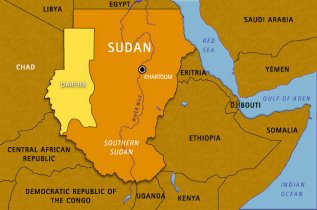|
Darfur Explained |
Darfur Explained |
Darfur Explained | Darfur Explained |
|
|

|
The international community's slow and often ineffective response remains a key component of the Darfur tragedy. While the sheer scale of the displacement prompted a massive humanitarian aid effort, meaningful protective intervention was delayed. The African Union Mission in Sudan (AMIS) lacked the mandate and resources to protect civilians, eventually necessitating the formation of the UN-AU Hybrid Operation in Darfur (UNAMID) in 2007. UNAMID operated under difficult conditions, facing obstruction from the Sudanese government and constant logistical challenges, and was often criticised for its inability to prevent localised attacks. Crucially, the conflict led to significant legal and political outcomes. In 2009 and 2010, the International Criminal Court (ICC) issued arrest warrants for President Omar al-Bashir for genocide, war crimes, and crimes against humanity—the first sitting head of state to be indicted by the ICC. While this was a monumental acknowledgement of the atrocities, al-Bashir remained in power for another decade, travelling internationally despite the warrants, highlighting the limits of international law in the face of state sovereignty. Peace efforts, such as the Abuja and Doha processes, yielded very little success, largely because they failed to address the core issues of land ownership, power-sharing, and security sector reform, leading to a fragmented and often renewed cycle of violence. By the late 2010s, violence had decreased from its peak intensity, but Darfur remained fragile. The overthrow of Omar al-Bashir in 2019 led to cautious optimism for a democratic transition in Sudan. However, this transition was fatally undermined by the deep integration of paramilitary forces—most notably the Rapid Support Forces (RSF), which evolved directly from the notorious Janjaweed militias—into the state apparatus. The current situation is tragically characterised by a catastrophic resurgence of hostilities, directly linked to the national conflict that erupted in April 2023 between the SAF and the RSF. While the fighting began in Khartoum, Darfur quickly became a primary battleground. The RSF and its allied militias, now better armed and organised than ever, seized the opportunity to settle old scores, leading to renewed waves of systematic attacks, especially in West Darfur against the Masalit population. Reports indicate massacres in cities like El Geneina that mirror the brutality of 2003. This renewed violence has created a humanitarian crisis of terrifying proportions. Nearly 10 million Sudanese have been displaced nationally since 2023, with Darfur accounting for a massive share. The historical persecution, which had been simmering for a decade, has now exploded into open warfare, further regionalising the conflict and threatening the security of neighbouring Chad. The withdrawal of UNAMID in 2020 left a security vacuum that the RSF and aligned militias have exploited mercilessly, effectively rendering Darfur a territory of renewed, widespread ethnic cleansing and war crimes. |
 The breaking point came in 2003. Frustrated by Khartoum’s persistent neglect, two main rebel groups - the Sudan Liberation Movement/Army (SLM/A) and the Justice and Equality Movement (JEM) - launched an insurgency, demanding political inclusion, wealth sharing, and an end to marginalisation. While the rebel groups were relatively small, Khartoum’s response was immediate and utterly devastating. Instead of relying solely on the regular Sudanese Armed Forces (SAF), the government adopted a strategy of proxy warfare.
The breaking point came in 2003. Frustrated by Khartoum’s persistent neglect, two main rebel groups - the Sudan Liberation Movement/Army (SLM/A) and the Justice and Equality Movement (JEM) - launched an insurgency, demanding political inclusion, wealth sharing, and an end to marginalisation. While the rebel groups were relatively small, Khartoum’s response was immediate and utterly devastating. Instead of relying solely on the regular Sudanese Armed Forces (SAF), the government adopted a strategy of proxy warfare.






